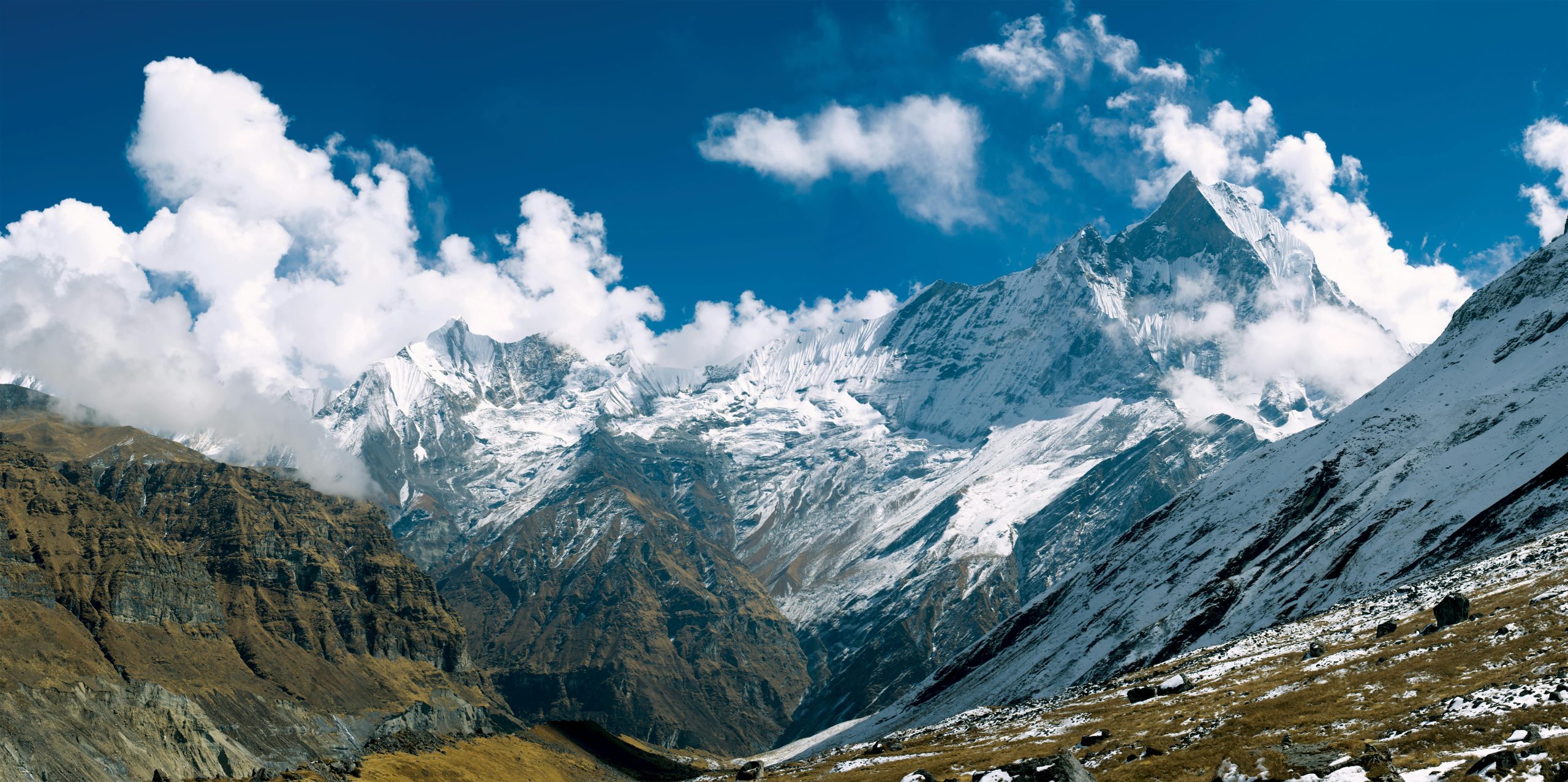The Annapurna Circuit Yoga Trek offers a unique adventure by blending the physical challenge of trekking with the calming effects of yoga. Each day begins with refreshing yoga sessions, including stretches and breathing exercises, to prepare you for the day’s hike. As you explore the hidden gems of Annapurna Circuit, surrounded by majestic peaks and diverse landscapes, these practices help you stay centered and connected to nature. This combination of hiking and yoga not only enhances your physical endurance but also provides moments of peace and self-discovery, allowing you to fully experience the beauty and lesser-known wonders of the Himalayas.
“In the blend of yoga and the vast Himalayan landscape, we find the perfect space to reconnect with our inner selves.”
Why Choose the Annapurna Circuit? Discover Its Hidden Gems
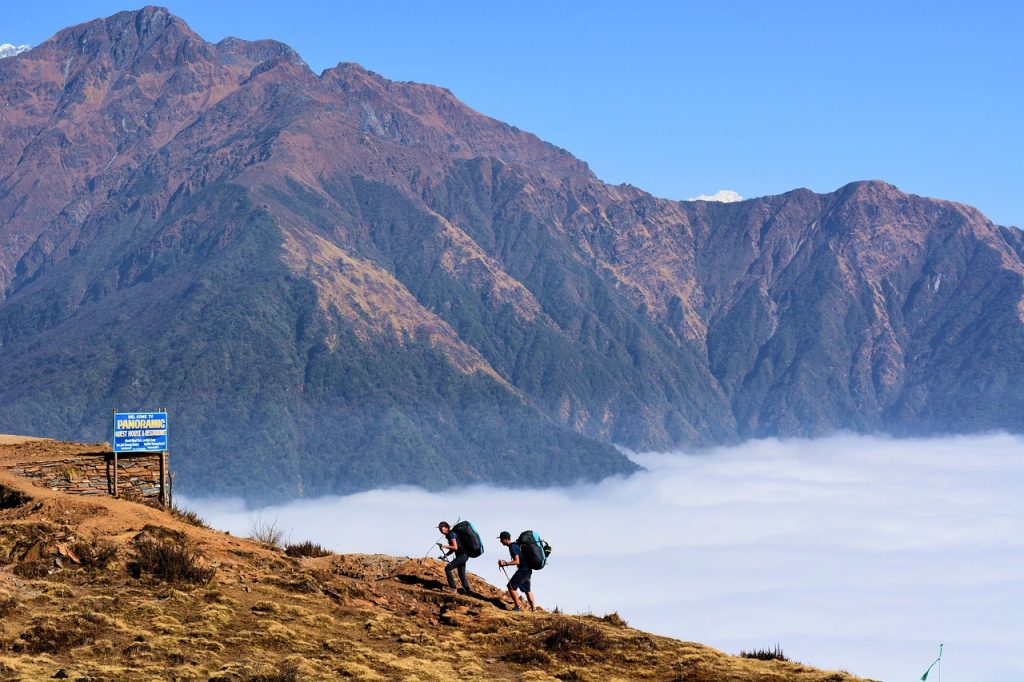
The Annapurna Circuit is more than just a popular trek; it’s a journey through hidden wonders and untouched beauty. While many people stick to the main trails, the hidden gems of Annapurna Circuit reveal lesser-known spots that make this trek truly special. From serene valleys to pristine lakes and charming villages, these hidden treasures offer an extraordinary experience beyond the beaten path. Here’s why you should choose the Annapurna Circuit for your next adventure:
1. Amazing Landscapes
The Annapurna Circuit offers a wide range of stunning views. You’ll see everything from lush forests to high-altitude deserts and peaceful meadows. By exploring the hidden gems of Annapurna Circuit, you’ll uncover secluded valleys, secret waterfalls, and tranquil lakes often missed by those sticking to the main trails. These spots provide a serene escape from the busier areas and showcase the region’s untouched beauty.
2. Genuine Cultural Experiences
Beyond the popular villages, there are small, remote communities where you can experience traditional Nepali and Tibetan life. Visiting these lesser-known villages and hidden gems of Annapurna Circuit allows you to connect more deeply with local cultures and witness their everyday life in a genuine and meaningful way.
3. Unique Trails
While many trekkers stick to the main route, the hidden gems of the Annapurna Circuit include lesser-known trails that offer a fresh perspective on the region. These secluded paths lead to stunning viewpoints and untouched landscapes, making your trek feel like a unique adventure away from the crowds.
4. Peace and Quiet
One of the best things about exploring the hidden gems of Annapurna Circuit is the chance to enjoy peace and solitude. The main route can be busy, but quieter trails and remote spots offer a more serene experience. Imagine trekking through pristine nature without the noise of large groups—an opportunity for a more personal and rewarding adventure.
5. Rich Flora and Fauna
The Annapurna Circuit is home to a diverse range of unique plants and animals. Exploring the hidden gems of the region, including less-visited areas, enhances your chances of encountering rare species and vibrant flora that you might miss on the main trails.
6. Secret Viewpoints
In addition to the well-known viewpoints, the hidden gems of Annapurna Circuit include many secret spots offering breathtaking views. These hidden viewpoints provide spectacular vistas of the Annapurna and Dhaulagiri ranges and are perfect for capturing beautiful photos. They also offer a chance to enjoy a unique sunrise or sunset experience.
7. Extra Adventure
Choosing the hidden trails and lesser-known paths of the Annapurna Circuit adds an extra layer of adventure to your trek. Discovering and exploring these hidden gems makes the journey more thrilling and full of surprises. It’s not just about reaching the end; it’s about embracing the adventure and beauty found along the way.
Best Time to Explore the Hidden Gems of the Annapurna Circuit
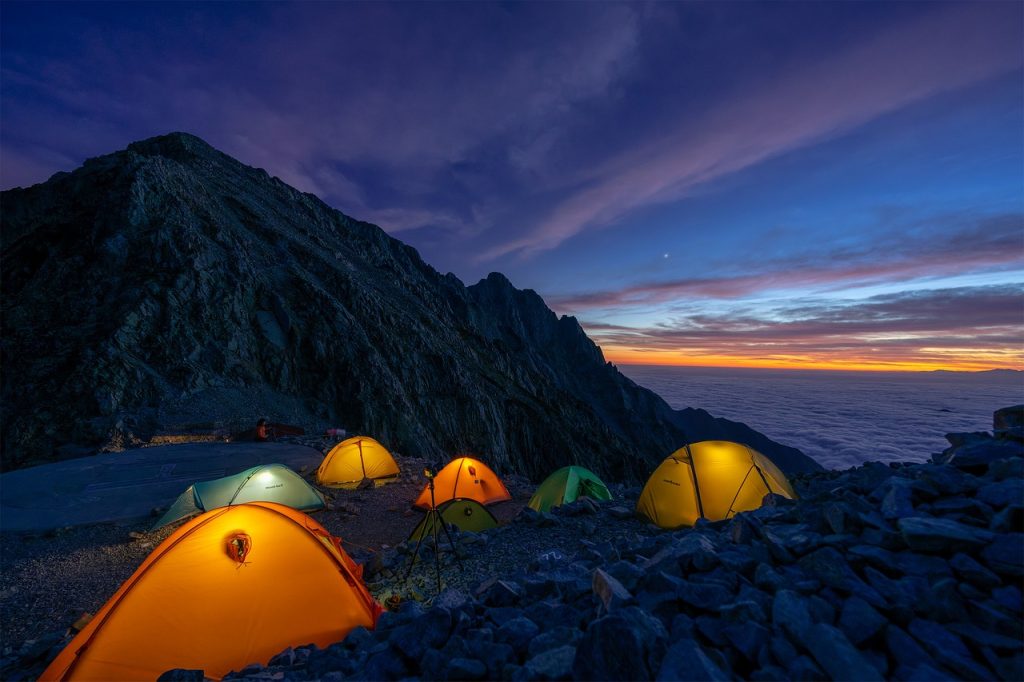
The best times to explore the hidden gems of the Annapurna Circuit are during the spring and autumn seasons. Here’s why:
Spring (March to May)
- Weather: Spring offers mild temperatures and clear skies. Daytime temperatures are usually comfortable, ranging from 10°C to 20°C (50°F to 68°F), making trekking enjoyable.
- Scenery: This season is famous for blooming rhododendron flowers, which add vibrant colors to the landscapes. The snow-capped peaks look especially stunning against the clear blue sky.
- Crowds: Spring is a popular time, but it’s not as crowded as autumn. This means you can enjoy the trek with a good balance of fellow trekkers and serene spots.
Autumn (September to November)
- Weather: Autumn brings crisp, clear weather with daytime temperatures between 10°C and 15°C (50°F to 59°F). The nights can get chilly, but the conditions are generally stable and pleasant for trekking.
- Scenery: The clear skies offer breathtaking views of the Annapurna and Dhaulagiri ranges. The post-monsoon season leaves the trails clear of dust, enhancing visibility and the overall trekking experience.
- Crowds: Autumn is the peak trekking season, so trails and lodges can be busier. However, the weather and visibility are usually at their best during this time.
Avoiding the Monsoon and Winter
- Monsoon (June to August): Heavy rains can make trails muddy and slippery, and there is a higher risk of landslides. Visibility can be poor due to clouds and rain.
- Winter (December to February): While the weather is generally clear, temperatures can drop significantly, especially at higher altitudes. Snow and ice can make trails challenging and some high passes may be closed.
Hidden Gems of the Annapurna Circuit: Unexplored Trails You Must Visit
The Annapurna Circuit is well-known for its stunning landscapes and rich cultural experiences. However, there are several lesser-known spots along the route that offer their own unique beauty and charm. Here’s a closer look at these hidden gems:
1. Manang Valley (3,500 meters / 11,483 feet)

Why It’s Special: Manang Valley is a serene high-altitude basin surrounded by towering peaks. This tranquil valley features lush green meadows, traditional stone villages, and awe-inspiring mountain views. The unique geography of the valley creates a sheltered environment where you can immerse yourself in the beauty of unspoiled nature. The crisp, clean air and panoramic views of the Annapurna and Gangapurna mountains make Manang Valley a perfect spot for acclimatization and reflection.
2. Tilicho Lake (4,919 meters / 16,138 feet)
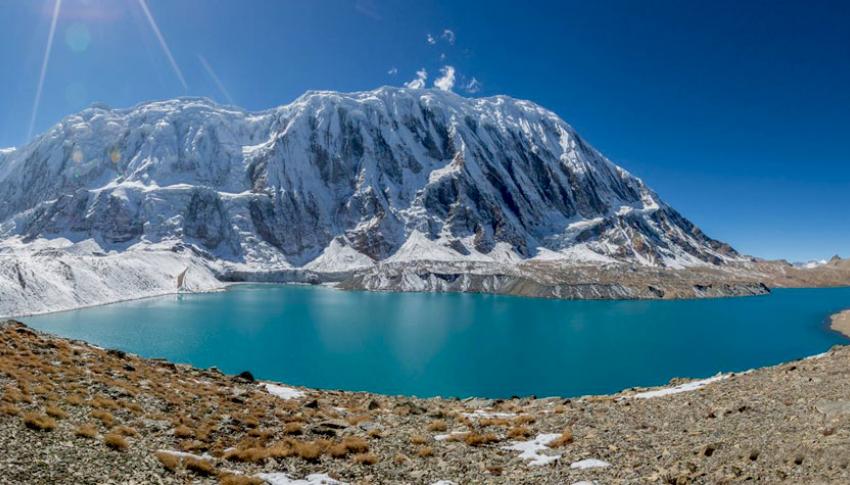
Why It’s Special: Tilicho Lake is one of the highest lakes in the world, renowned for its striking turquoise color that contrasts vividly with the surrounding snowy peaks. The lake’s location, high up in the mountains, provides a spectacular and peaceful setting. The clear blue waters reflect the sky and the snow-covered mountains, creating a stunning visual experience that’s both calming and exhilarating.
3. Ice Lake (4,600 meters / 15,091 feet)
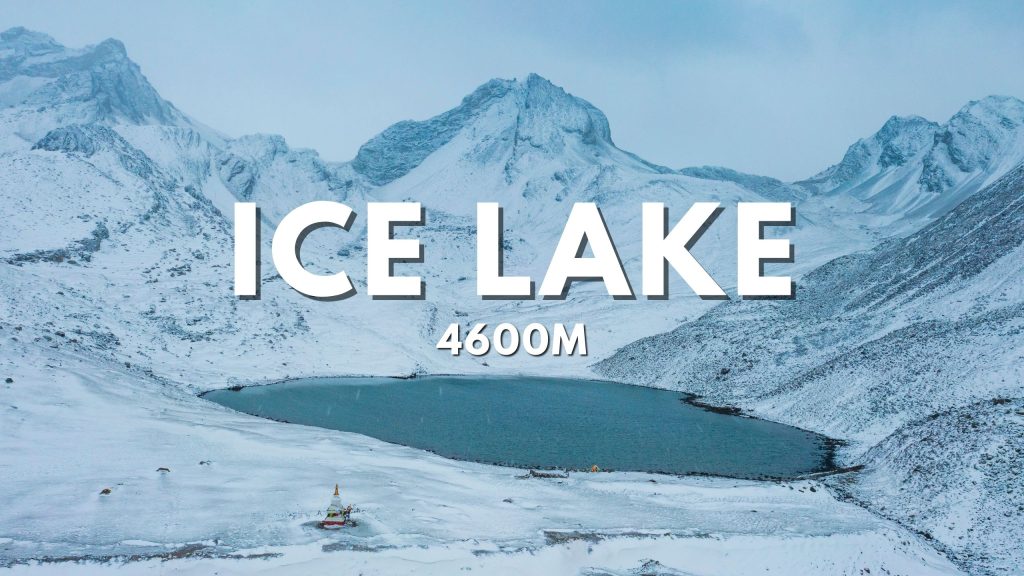
Why It’s Special: Ice Lake, situated near Manang, is a pristine high-altitude lake surrounded by a ring of snowy peaks. Its serene, still waters and the surrounding snow-capped mountains create a picturesque and tranquil setting. The hike to Ice Lake offers breathtaking views of the Himalayas and a peaceful retreat from the more traveled paths.
4. Thorong La Pass (5,416 meters / 17,769 feet)
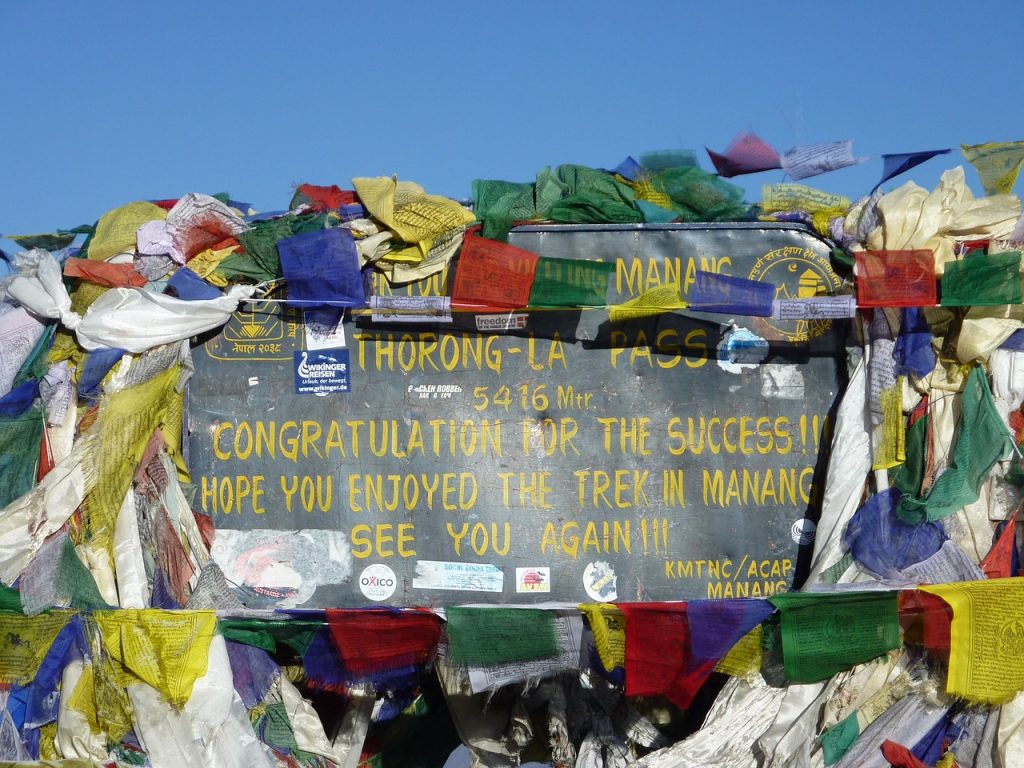
Why It’s Special: As the highest point on the Annapurna Circuit, Thorong La Pass offers unparalleled panoramic views of the Himalayan range. The challenging ascent is rewarded with stunning vistas of snow-covered peaks, deep valleys, and expansive sky. The feeling of standing at such a high altitude, surrounded by some of the world’s most majestic mountains, is both humbling and exhilarating.
5. Muktinath (3,710 meters / 12,172 feet)
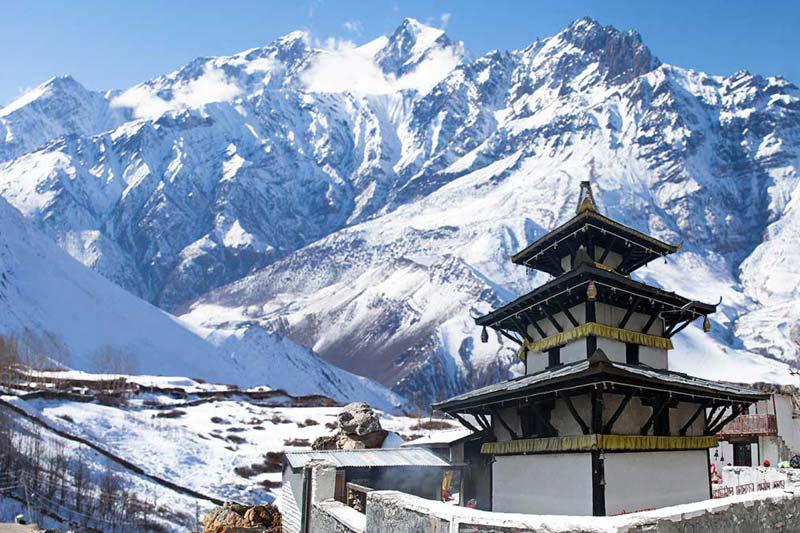
Why It’s Special: Muktinath is a sacred site that blends natural wonders with spiritual significance. The site features 108 water spouts and a natural gas flame that burns perpetually, set against a backdrop of rugged landscapes. The combination of spiritual significance and the dramatic, barren beauty of the surrounding terrain creates a profound and unique experience.
6. Jomsom (2,720 meters / 8,923 feet)
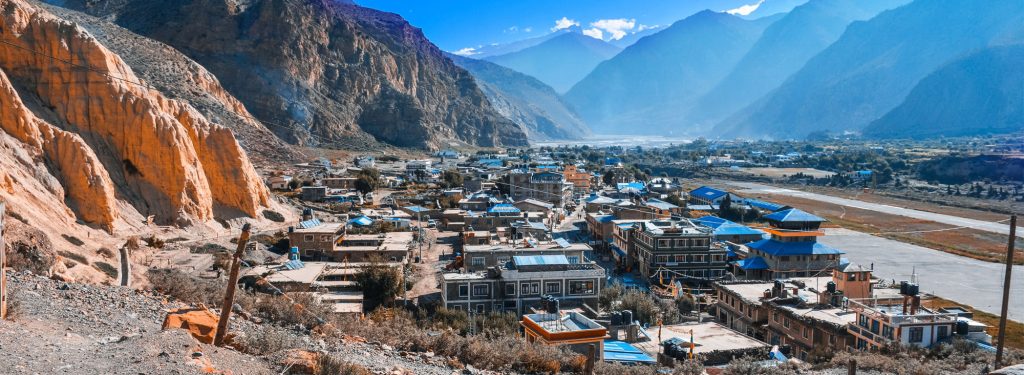
Why It’s Special: Jomsom is a lively town situated in a valley that offers spectacular views of the surrounding mountains and the Kali Gandaki River. Known for its Tibetan culture and vibrant market, Jomsom provides a blend of cultural experiences and stunning natural scenery. The town’s location makes it an excellent base for exploring nearby attractions and enjoying the dramatic landscape.
7. Marpha (2,670 meters / 8,756 feet)

Why It’s Special: Marpha is renowned for its apple orchards and traditional stone houses, set against the backdrop of towering mountains. The village’s charming atmosphere, combined with its picturesque landscapes and clear views of the surrounding peaks, makes Marpha a delightful stop. The local apple products, including brandy, add a unique local flavor to your visit.
8. Tatopani (1,200 meters / 3,937 feet)

Why It’s Special: Tatopani is famous for its natural hot springs, which are a welcome respite after long days of trekking. The hot springs are nestled in lush greenery and offer stunning views of the surrounding river and hills. The warm, soothing waters provide a relaxing experience, making it a perfect place to unwind and rejuvenate.
9. Ghandruk (1,940 meters / 6,365 feet)
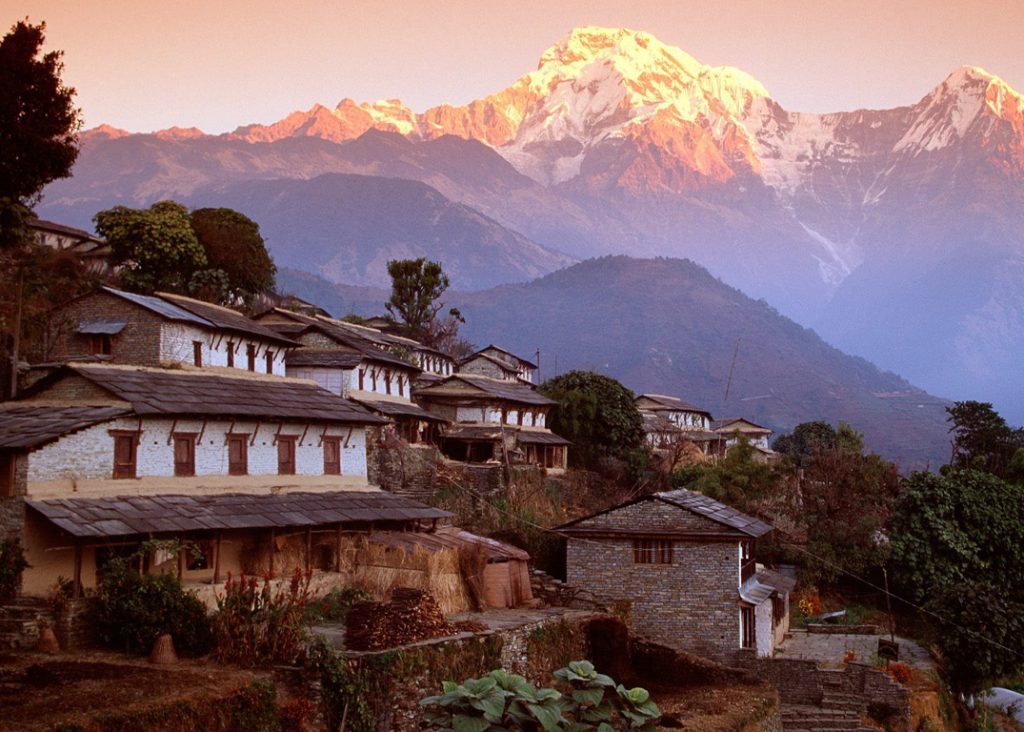
Why It’s Special: Ghandruk is a traditional Gurung village with a warm and inviting atmosphere. The village offers spectacular views of Annapurna South and Machapuchare (Fishtail) peaks, set against terraced fields and traditional architecture. The rich cultural heritage and the panoramic views make Ghandruk a highlight of the trek.
10. Poon Hill (3,210 meters / 10,531 feet)
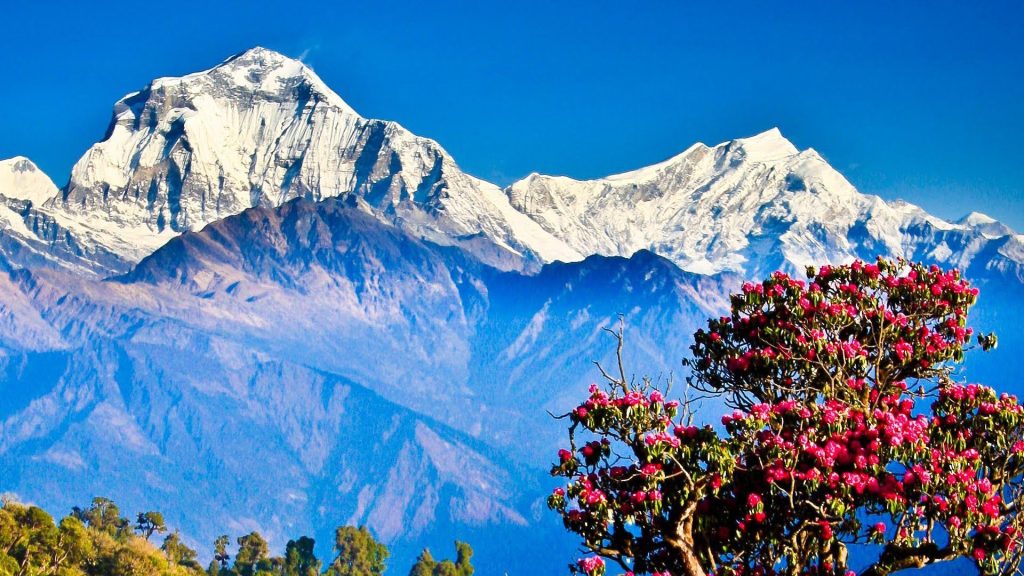
Why It’s Special: Poon Hill is renowned for its breathtaking sunrise views over the Annapurna and Dhaulagiri ranges. The early morning light illuminates the peaks in golden hues, creating a stunning visual spectacle. The panoramic vistas from Poon Hill make it a favorite spot for photographers and nature lovers.
11. Marshyangdi River Valley and Kali Gandaki Valley
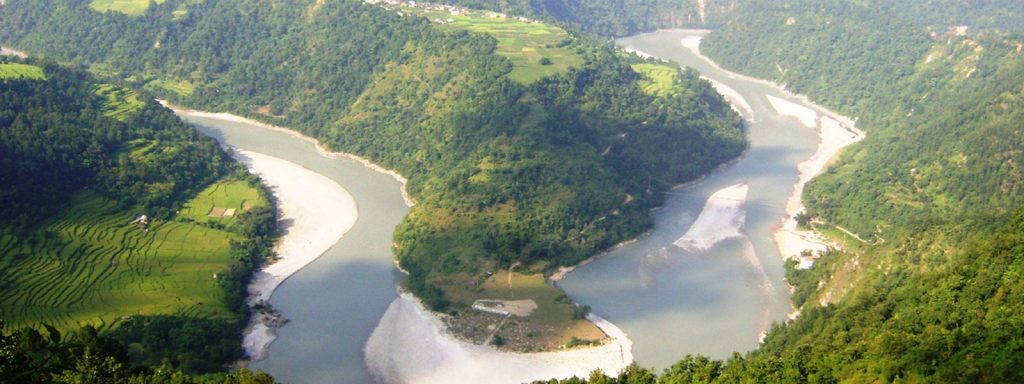
Why It’s Special: These valleys offer diverse and dramatic landscapes. The Marshyangdi River Valley features lush green terraces and vibrant scenery, while the Kali Gandaki Valley presents a stark, desert-like environment with deep gorges and rugged terrain. Each valley provides unique and striking views that showcase the variety of landscapes along the Annapurna Circuit.
12. Pokhara (827 meters / 2,713 feet)

Why It’s Special: Known as the “City of Seven Lakes,” Pokhara is surrounded by beautiful lakes such as Phewa, Rupa, and Begnas. The city offers a relaxing retreat with stunning lake views, picturesque landscapes, and a range of activities. It’s a perfect place to unwind after the trek, explore local markets, and enjoy the serene beauty of the lakes and surrounding hills.
These hidden gems of Annapurna Circuit offer a mix of awe-inspiring natural beauty and rich cultural experiences. Each location provides its own unique features, from high-altitude lakes to sacred sites and vibrant towns, making your trek even more memorable and rewarding.
How to Reach These Must-See Spots
1. Manang Valley (3,500 meters / 11,483 feet)
How to Get There:
- From Besi Sahar: Start your trek from Besi Sahar after obtaining your permits. Follow the Annapurna Circuit route, passing through places like Chamje and Dharapani. You’ll eventually reach Manang Valley, which is situated along the main trail.
- Trek Duration: It typically takes around 5-7 days to reach Manang from Besi Sahar, depending on your pace and acclimatization schedule.
2. Tilicho Lake (4,919 meters / 16,138 feet)
How to Get There:
- From Manang: To visit Tilicho Lake, you’ll need to divert from the main Annapurna Circuit trail. From Manang, take a detour towards Khangsar village and then follow the trail to Tilicho Base Camp.
- Trek Duration: The detour to Tilicho Lake usually takes about 3-4 days (1 day to Khangsar, 2 days to Tilicho Base Camp, and 1 day to reach the lake). Make sure to adjust your Annapurna Circuit itinerary accordingly.
3. Ice Lake (4,600 meters / 15,091 feet)
How to Get There:
- From Manang: Ice Lake is a day hike from Manang. Follow the trail towards the lake, which begins just outside Manang. The trek involves a steep ascent, but it’s manageable as a day trip.
- Trek Duration: Allocate a full day for the hike to Ice Lake and back to Manang. Starting early in the morning is advisable to return before dark.
4. Thorong La Pass (5,416 meters / 17,769 feet)
How to Get There:
- From Manang: Thorong La Pass is a key part of the Annapurna Circuit. From Manang, continue trekking eastward, passing through Thorong Phedi and High Camp before reaching the pass.
- Trek Duration: It typically takes 2-3 days to reach Thorong La from Manang. The pass is usually crossed early in the morning to avoid strong winds and to complete the descent to Muktinath by evening.
5. Muktinath (3,710 meters / 12,172 feet)
How to Get There:
- From Thorong La Pass: After crossing Thorong La Pass, descend to Muktinath. The trail takes you down from the pass to this sacred site.
- Trek Duration: It generally takes 1-2 days to descend from Thorong La Pass to Muktinath.
6. Jomsom (2,720 meters / 8,923 feet)
How to Get There:
- From Muktinath: Continue the trek from Muktinath to Jomsom. The trail is relatively straightforward and follows the Kali Gandaki River.
- Trek Duration: The trek from Muktinath to Jomsom usually takes 1 day.
7. Marpha (2,670 meters / 8,756 feet)
How to Get There:
- From Jomsom: Marpha is a short trek from Jomsom. Follow the trail that runs along the Kali Gandaki River, which leads directly to Marpha.
- Trek Duration: The trek from Jomsom to Marpha takes approximately 1-2 hours.
8. Tatopani (1,200 meters / 3,937 feet)
How to Get There:
- From Marpha: Continue trekking south from Marpha to Tatopani. The trail descends through terraced fields and forested areas.
- Trek Duration: The trek from Marpha to Tatopani usually takes about 1-2 days, depending on your pace and breaks.
9. Ghandruk (1,940 meters / 6,365 feet)
How to Get There:
- From Nayapul: Ghandruk is accessible via Nayapul, which can be reached by a short trek or by jeep from Pokhara. The trek from Nayapul to Ghandruk is a relatively easy ascent.
- Trek Duration: It typically takes 2-3 hours to trek from Nayapul to Ghandruk.
10. Poon Hill (3,210 meters / 10,531 feet)
How to Get There:
- From Ghandruk: Hike from Ghandruk to Poon Hill by following the trail that leads you through beautiful rhododendron forests and terraced fields.
- Trek Duration: The trek to Poon Hill can be completed as a day hike from Ghorepani or a two-day trek from Ghandruk, including a night’s stay in Ghorepani.
11. Marshyangdi River Valley and Kali Gandaki Valley
How to Get There:
- Marshyangdi River Valley: The Marshyangdi River Valley is part of the Annapurna Circuit, and you’ll traverse it as you hike towards Manang.
- Kali Gandaki Valley: The Kali Gandaki Valley is reached after crossing Thorong La Pass and is a significant part of the trek between Muktinath and Jomsom.
12. Pokhara (827 meters / 2,713 feet)
How to Get There:
- From Jomsom: You can reach Pokhara from Jomsom by a short flight or a longer overland journey. The flight is quicker and offers scenic views of the Himalayas, while the overland route is more adventurous and takes about 6-8 hours by bus.
- Trek Duration: If traveling by flight, it takes approximately 25-30 minutes. By road, it takes around 6-8 hours.
Challenges You Might Face on the Annapurna Circuit Trek
The Annapurna Circuit is celebrated for its breathtaking views and cultural richness, but it presents several challenges. Here’s what you might encounter and how to handle it:
1. Altitude Sickness
What It Is: Altitude sickness, or Acute Mountain Sickness (AMS), occurs as you ascend to higher elevations where there is less oxygen. Symptoms can include headaches, nausea, dizziness, and fatigue. Severe cases may lead to more serious conditions like High Altitude Pulmonary Edema (HAPE) or High Altitude Cerebral Edema (HACE), which require immediate descent and medical attention.
How to Deal:
– Ascend Gradually: Give your body time to acclimatize by ascending slowly. Follow the 300-meter rule—don’t ascend more than 300 meters per day once you’re above 3,000 meters.
– Rest Days: Spend extra days in high-altitude areas like Manang to acclimatize. Utilize these rest days to explore the area at a lower altitude.
– Hydrate: Drink plenty of water to stay hydrated, which helps your body adjust to the lower oxygen levels.
– Avoid Alcohol: Alcohol can worsen dehydration and impede acclimatization.
– Listen to Your Body: If symptoms persist or worsen, descend to a lower altitude immediately. Seeking medical advice is crucial if symptoms do not improve.
2. Weather Conditions
What It Is: The Annapurna Circuit is known for its unpredictable weather. Conditions can shift from clear, sunny skies to snowstorms, particularly in higher elevations like Thorong La Pass, where temperatures can plummet well below freezing.
How to Deal:
– Layer Up: Wear layers of clothing that can be added or removed as needed. Ensure you have a high-quality, waterproof jacket, warm insulating layers, and thermal gloves.
– Check Forecasts: Regularly check the weather forecasts and be prepared to adjust your plans accordingly. Some regions may have limited weather updates, so consult local guides for the most current information.
– Be Flexible: If the weather deteriorates, be ready to alter your trekking schedule. Delays can occur, so plan for some buffer time in your itinerary.
3. Physical Demands
What It Is: The trek is physically demanding with long hiking days, challenging ascents, and descents. The terrain varies from steep slopes to rough paths, which can be exhausting.
How to Deal:
– Pre-Trek Training: Prepare physically by hiking with a loaded backpack, focusing on cardiovascular fitness and leg strength.
– Pace Yourself: Maintain a steady pace that allows you to conserve energy. Listen to your body and take breaks as needed.
– Rest: Incorporate rest days into your itinerary to recover from strenuous sections.
4. Rough and Varied Terrain
What It Is: The Annapurna Circuit features diverse and challenging terrain, including rocky paths, uneven ground, and steep inclines. Navigation can be tricky, particularly in bad weather.
How to Deal:
– Proper Footwear: Wear sturdy, well-fitting trekking boots with good ankle support. Ensure they are broken in before your trek to avoid blisters.
– Use Trekking Poles: Trekking poles provide extra stability and help with balance on uneven and steep sections.
– Move Cautiously: Navigate rough patches carefully, especially if they are wet or slippery. Take small, deliberate steps.
5. Limited Medical Facilities
What It Is: Medical facilities along the Annapurna Circuit are basic, and serious health issues may require evacuation, which can be time-consuming and costly.
How to Deal:
– First Aid Kit: Carry a comprehensive first aid kit with essentials like bandages, medications for altitude sickness, pain relievers, and antiseptics. Know how to use the items in your kit.
– Travel Insurance: Obtain travel insurance that covers medical emergencies, including evacuation and helicopter rescue if needed.
– Basic First Aid: Familiarize yourself with basic first aid techniques and emergency procedures.
6. Accommodation and Food Variability
What It Is: The quality of lodging and food can vary significantly, especially in remote areas. Accommodations may range from basic lodges to more comfortable guesthouses, and food options can be limited.
How to Deal:
– Expect Simplicity: Be prepared for simple lodging and basic meals. Bring some of your own snacks and instant meals for variety.
– Flexibility: Be open to different levels of comfort and dietary options. Adapt to the local food and be cautious with what you eat to avoid stomach issues.
7. Crowds and Congestion
What It Is: Certain sections of the Annapurna Circuit, such as Thorong La Pass, can be crowded during peak trekking seasons, leading to congestion and longer wait times.
How to Deal:
– Shoulder Seasons: Consider trekking in the shoulder seasons (late spring or early autumn) to avoid the peak crowds.
– Early Starts: Begin your trekking days early to avoid congestion on popular sections and to enjoy quieter trails.
8. Logistical Challenges
What It Is: Organizing permits, transportation, and guides can be complex, especially if you are not using a trekking agency. This includes arranging TIMS (Trekkers’ Information Management System) and ACAP (Annapurna Conservation Area Permit).
How to Deal:
– Plan Ahead: Arrange permits, transport, and guides well in advance. Research and book through reputable agencies if you’re unsure about organizing these logistics yourself.
– Documentation: Keep all your permits and documents organized and easily accessible during the trek.
9. Communication and Connectivity
What It Is: Internet and phone connectivity can be unreliable or unavailable in remote areas along the trek.
How to Deal:
– Prepare for Limited Connectivity: Be ready for limited or no communication. Inform family and friends about your itinerary and expected return.
– Local Options: Some lodges may offer limited phone or internet services. Carry a satellite phone if communication is crucial.
10. Cultural Sensitivity
What It Is: The Annapurna Circuit passes through traditional villages with distinct cultural practices and customs. Being culturally aware is essential to respectful interactions.
How to Deal:
– Respect Traditions: Dress modestly, especially when visiting religious sites and villages. Ask permission before taking photos of people or their property.
– Learn Local Customs: Familiarize yourself with local customs and etiquette to ensure respectful and meaningful interactions with the local communities.
Permits Required for the Annapurna Circuit Trek
To trek the Annapurna Circuit, you need a couple of essential permits:
1. Annapurna Conservation Area Permit (ACAP): This permit is required to trek in the Annapurna region and supports conservation efforts. You can obtain it from the Nepal Tourism Board in Kathmandu, the ACAP office in Pokhara, or through trekking agencies. It costs about $30 USD for a 7-day trek.
2. TIMS Card (Trekkers’ Information Management System): This card is mandatory for all trekkers to ensure safety and management. It’s available from the Trekking Agencies’ Association of Nepal (TAAN) in Kathmandu or Pokhara, or through trekking agencies, costing around $10 USD.
If you plan to explore restricted areas beyond the main circuit, additional permits might be required. It’s best to arrange all permits in advance or through a trekking agency to avoid any issues.
Requirements for Exploring the Hidden Gems of the Annapurna Circuit
To fully enjoy the hidden gems of Annapurna Circuit, such as Manang Valley, Tilicho Lake, and Ice Lake, you’ll need to prepare adequately. Here’s what you need to know:
1. Physical Fitness:
– Altitude Acclimatization: Many of the hidden gems of Annapurna Circuit are at high elevations. Make sure you’re in good physical shape to handle the altitude and long hikes. Spend extra days acclimatizing at key points like Manang Valley to reduce the risk of altitude sickness.
– Training: Enhance your stamina by training with a loaded backpack and hiking on varied terrain before your trek. This will help you manage the physical demands of the trek more comfortably.
2. Gear and Clothing:
– Warm Layers: Weather on the Annapurna Circuit can be unpredictable. Pack layered clothing, including a waterproof jacket, warm thermal layers, and gloves, to stay comfortable in changing conditions.
– Durable Footwear: Invest in high-quality trekking boots with good ankle support to handle rocky and uneven trails. Proper footwear is crucial for safety and comfort.
– Camping Gear: In more remote areas where lodges are sparse, you might need to camp. Bring a reliable tent, a sleeping bag rated for cold temperatures, and other camping essentials if you plan to stay in these locations.
3. Guides and Logistics:
– Local Guides: Hiring a local guide can be beneficial, especially for less-traveled paths. Guides are familiar with the area and can help navigate the terrain, enhance your cultural experience, and ensure safety.
– Travel Insurance: Ensure that your travel insurance covers trekking activities and includes provisions for emergency evacuation. This is vital for safety in case of health issues or accidents.
4. Supplies and Snacks:
– Food and Water: While some areas have lodges where you can buy food, more remote spots might have limited facilities. Carry extra snacks, energy bars, and high-protein foods to keep your energy up during long stretches between resupply points.
– Water Purification: Bring a reliable water purification system or tablets to ensure you can safely drink from natural sources along the trek.
5. Accommodation:
– Booking in Advance: For popular spots on the circuit, book accommodations in advance to secure a place to stay. In remote areas, be prepared for basic lodgings or camping if no lodges are available. Flexibility in your plans can also help if you encounter unexpected changes.
Conclusion
The Annapurna Circuit is a remarkable journey that offers more than just well-trodden paths. With its hidden gems like Manang Valley, Tilicho Lake, and Ice Lake, this trek invites you to explore beyond the popular trails and discover the untouched beauty of the Himalayas. By preparing adequately, including ensuring physical fitness, having the right gear, and understanding the local logistics, you can fully immerse yourself in the serene landscapes and vibrant cultures that make the Annapurna Circuit so special.
Whether you’re seeking breathtaking views, cultural encounters, or a peaceful retreat away from the crowds, the Annapurna Circuit delivers an experience that is both challenging and profoundly rewarding. Embrace the adventure, respect the local traditions, and take time to enjoy the tranquility and beauty that await you on this extraordinary trek. Your journey through this stunning region promises to be an unforgettable exploration of both nature and self.

